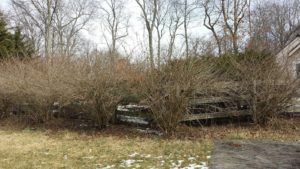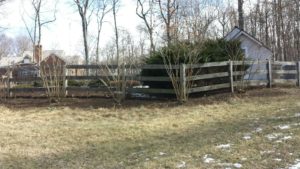I am often asked by people what do you do in the winter, and my response is usually “Oh there’s lots to do outside, if the weather co-operates!” Pruning in winter, is so much simpler, as most deciduous shrubs have naturally lost their leaves and it is therefore easier to see the plant in it is naked glory. This is particularly important when considering the structure of the plant. Most pruning allows the plant to have a better airflow through its branches when in leaf and this helps reduce the chance for diseases and pests. At this time of year it is also an attractive to view well pruned plant material from the house, as there is little else to see. A well pruned plant also creates hiding places for birds once leaf out has begun in late spring, acting as perches for young to practice flying and as a quick refuge from predators.

A heavily sheared plant is not a healthy plant…too much emphasis placed on tip growth leads to weakened plant structure and will eventually (possibly after many years) weaken the plant to a point where it can no longer grow successfully. This is why winter pruning is so important. A plant that is pruned well in the winter months will grow well through the coming year and be able to stand up more readily to anything that nature wishes to impose upon it. The new growth that ensues in spring will then allow more of the older material to be pruned out the following winter. A health plant is usually fully rejuvenated in three to five years, with about one third of the old stems being removed each time the plant is pruned until the cycle is completed and starts again.
Some plants are however more difficult to prune than others and if not pruned correctly can affect flowering and fruit production. Some plants produce flower buds for the following year right after they have flowered in the current year. Others flower at different times of the year and the timing of the pruning can be critical. The most simple rule of thumb is to follow the three D’s…dead, dying and diseased, if you remove these alone then it will go a long way to improving your plant health and vigor.
Simon Barrett